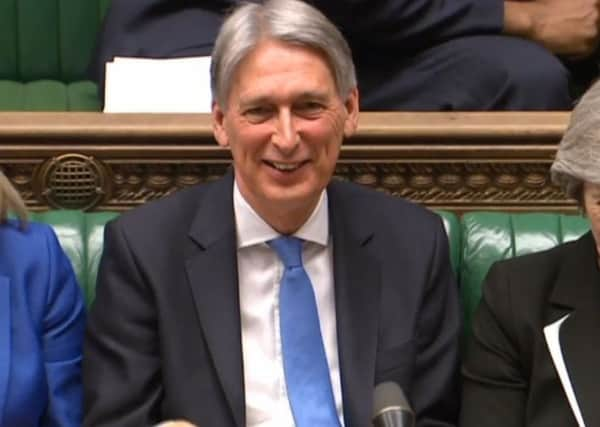Balancing books may cost £30bn in tax rises, Chancellor told


Chancellor Philip Hammond used his Spring Statement to hint he will turn on the spending tap in this autumn’s Budget after positive public finance figures pointed to “light at the end of the tunnel” following years of austerity.
The Chancellor told MPs he had shed his Eeyore image and was feeling “Tiggerish”, after the Office for Budget Responsibility (OBR) edged up growth projections for 2018 and forecast falls in Government borrowing and national debt over the coming years.
Advertisement
Hide AdAdvertisement
Hide AdBut in its analysis of the economic challenges facing the country, the Institute for Fiscal Studies painted a bleak image.
Responding to Mr Hammond’s new-found optimism, IFS chief Paul Johnson said: “Growth remains depressed, among the worst in the G20.
“And given the uncertainties around Brexit there remains plenty of risk on the downside.”
He said public debt is “not really due to fall” and Mr Hammond should be “especially cautious about opening the spending taps”. But pressures on public services are “undeniable” with many struggling in ways they were not two or three years ago.
Advertisement
Hide AdAdvertisement
Hide Ad“Safety in prisons is being compromised. The NHS is visibly failing to cope as well as it has,” he said. “Local government... is showing the strain.”
Just to avoid spending falling as a fraction of national income beyond 2019-20, Mr Hammond would need to find an additional £14bn a year relative to current plans by 2022-23.
However, if the Chancellor wants to eliminate the deficit by the mid-2020s he would need to fund an additional £18bn through tax increases or spending cuts by then.
“Put these two together and on current forecasts just keeping spending constant as a fraction of national income beyond 2019-20 and reaching budget balance by the mid-2020s would require tax rises of £30bn a year,” Mr Johnson said. “And that’s before additional demographic pressures which could add another £11n a year to the money the Government would need to find from somewhere in 2025 if it wants to cover the additional demands for health, pension and social care spending.”
Advertisement
Hide AdAdvertisement
Hide AdThe Resolution Foundation living standards think tank also said the Chancellor would need better growth or increased taxes if he was to stick to his goal of eliminating the deficit and driving significant
reductions in debt, while ending the UK’s unprecedented squeeze on public spending.
During the Spring Statement, the Chancellor announced that borrowing levels were forecast to fall.
Mike Cartwright, Policy and Representation Executive from the West & North Yorkshire Chamber of Commerce, said: “It would be good if the lower projected borrowing forecast is realised, we would want to see some business growth stimulants in the Autumn Budget as a result of this.
Advertisement
Hide AdAdvertisement
Hide Ad“Infrastructure investment, in particular, needs to be at the top of the list. Measures that can spur on productivity to higher levels are needed, too, as this looks likely to be subdued in the short-term.”
A Treasury spokesman said: “Our balanced approach has reduced the deficit while also cutting taxes for over 30 million people and investing in our vital public services.
“We are training more doctors, more schools are rated as outstanding and we are funding the second largest defence budget in Nato. Thanks to the hard work of the British people we will now see the first sustained fall in debt in 17 years.”